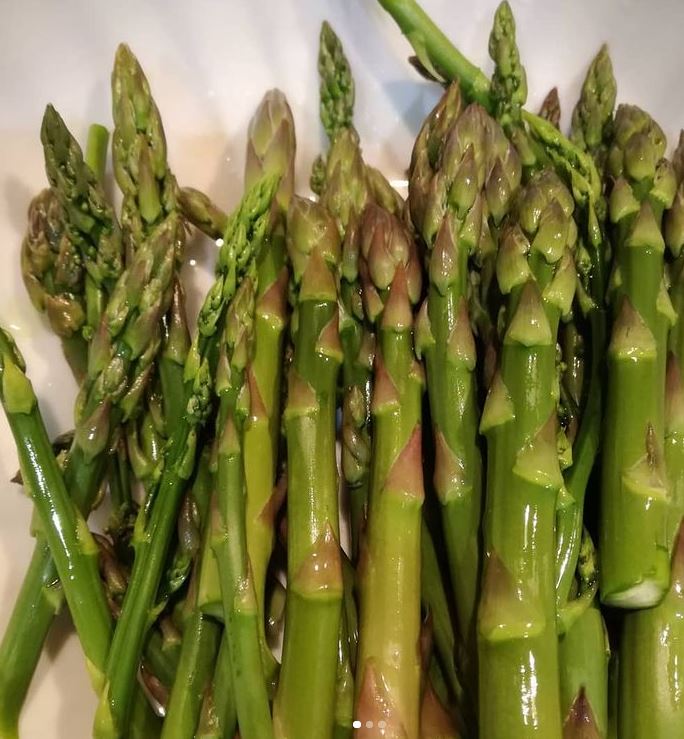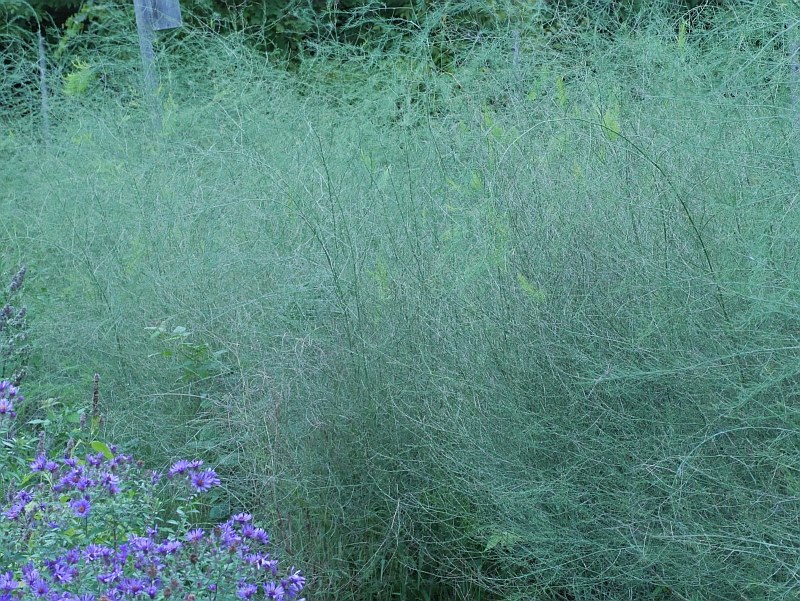
Perennial edibles are a wonderful addition to most landscapes. They are available early in the season before many other vegetables have gotten growing. There are actually a fair number of perennial vegetables that are eaten for their early shoots like udo and seakale but asparagus is the most common in this part of the world.
It has a wonderfully self-evident botanical binomial in Asparagus officinalis. Though the origin of the word asparagus is uncertain, I love the theory that contains the proto-indo-european language root ‘sp(h)er(e )g’ as in to spring up. The plant itself originates in the eastern Mediterranean and Asia Minor. Now it grows widely around the temperate zones even escaping cultivation. You can often find feral asparagus in ditches beside farmers’ fields.
This member of the lily family can be very long lived when grown in a favourable spot. Crowns, which are roots and early shoots, are often planted, but it can be started from seed. This will produce both male and female plants. The male plants are thought to be better spear bearers but both will produce succulent spring shoots.
The variety Mary Washington was selected in the early half of the 1900s for resistance to asparagus rust, hardiness and earliness. To grow from seed, start 12 weeks before last frost. It helps to soak seeds overnight or until they swell up as they have hard seed coats. Poke into the soil in individual plant cells or pots or at least 2 inches apart in the tray. These are not the kind of seeds that immediately pop their seed coats the next day so be patient. Eventually they’ll send up adorable mini asparagus fern. Harden off and plant out after danger of frost. You will be putting a lot of early investment in these plants but they can produce for decades so it’s worth it. In fact, you won’t be able to harvest for the first few years. Though you will read that you can do a light harvest in year two, you might want to wait until year three depending on how your plants are growing.
Plant in a sunny, well drained site which can be kept well mulched and/or weeded while it is establishing. Mature asparagus is a big plant. The fronds can be 5-6 feet tall and they produce an impressive root structure so need 1-3 foot spacing (spacing depends on growing method and environment). Though you can plant one or two in your garden, if you really want to eat a bunch of asparagus, you’ll do best with a row. This is where starting from seed can be quite economical. Some people remove female plants when they start to go to seed. Otherwise you may get volunteers that act as weeds within the asparagus row. Another way to look at it is that you get more plants for yourself or for your friends and family. Also the flowers are popular with pollinators and the red berries rather pretty on golden fall fronds.
Both thick and thin stems are delicious to eat though the thick stems are actually more succulent. How many stems you choose to harvest is a matter of opinion but keep in mind that you are actively depleting the roots’ energy stores.

Mary Washington is a vigorous and true from seed asparagus. After spring harvest, the remaining spears will leaf out into a lightly textured screen of feathery fronds. Well established plants are easy to care for and drought tolerant. It doesn’t hurt to mulch beds and to side dress with something like compost once a year. My 30-foot row of old plants easily made it through the devastating drought in Eastern Ontario of 2012.
Grow a few plants in a smaller garden for a touch of vegetable whimsy in the spring and for their lovely fronds in the summer or a wide row in a larger garden as part of a well producing, resilient foodscape.